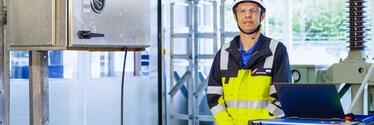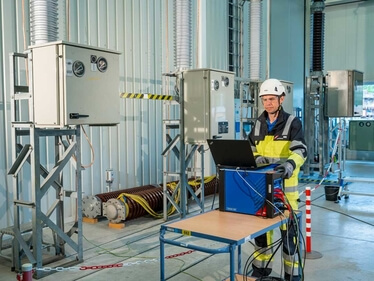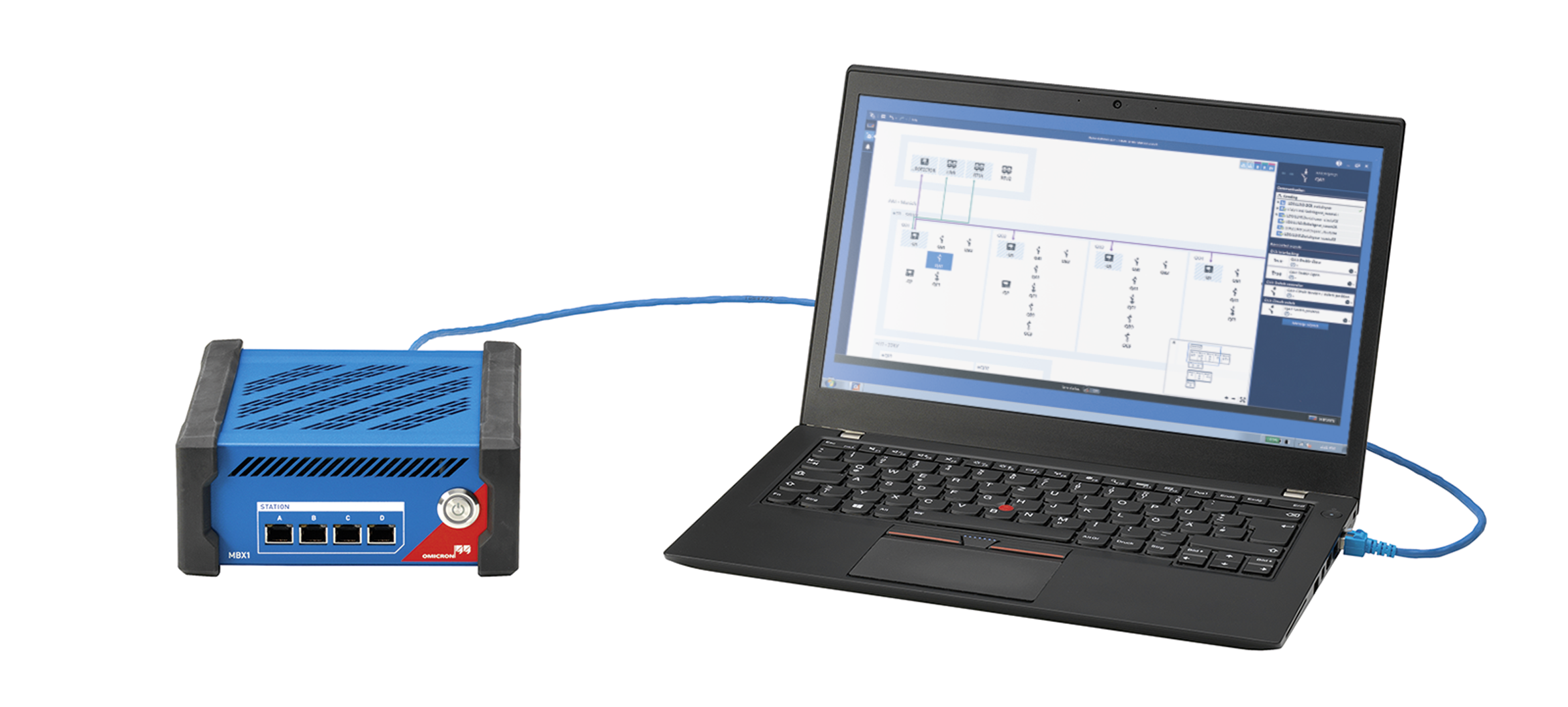SIEGFRIED: Ari, there are various tests that can be performed on circuit breakers to assess their condition. Can you mention some of them?
ARI: Yes, sure. There are indeed many tests. I would divide them into three groups: electro-mechanical tests, electrical tests and visual inspections.
Visual inspections are used to check for visible damages, corrosion, gas/air/hydraulic leakages or using thermographic cameras, for example, to check if the connections or the main contact unit show any abnormal signs of heat, which could mean that connections/contacts are worn out. Such inspections are done approximately once a year.
Electrical tests are the classical tests made during circuit breaker testing, such as timing, static and dynamic contact resistance test, coil and motor current analysis, or minimum pickup tests. Electro-mechanical tests include hydraulic/gas pressure or vibration during operation, but the most important electromechanical test is the motion measurement. Both electrical and electromechanical tests are usually done once every 10-15 years. However, sometimes they are carried out more frequently, especially if the circuit breaker needed to clear a fault or if something has been found during the visual inspection.
SIEGFRIED: Which test are most often performed and which would you recommend?
ARI: The most common tests to be performed are:
- the static and dynamic contact resistance test,
- the timing test,
- the coil and motor current analysis, and
- motion measurement
Personally, I also highly recommend performing the dynamic contact resistance test together with a motion measurement.
SIEGFRIED: Could you briefly explain what's behind these tests?
ARI: Sure. The static contact resistance test is used to check the status of the main contacts, i.e. their ability to carry the rated current without big losses.
The dynamic contact resistance test records the contact resistance during breaker operation, delivering information about wear- and tear-related problems with the main and arcing contacts. This is the only way to get information about the arcing contact without opening the interrupter chamber.
The timing test is used to verify a safe and reliable circuit breaker operation by evaluating the operating times and synchronicity, per phase and between the phases.
During the coil current analysis, the current signature of the coil when the breaker is operated is recorded. Deviations can show electrical or mechanical defects of the trip or close coil components.
The motor current analysis is performed by recording the current required by the motor to charge the spring or to increase the hydraulic or air pressure. In the same way as for the coil current analysis, the motor current analysis is performed to detect possible deviations in the electrical or mechanical components of the motor. The motion measurement is done o check the overall performance of the mechanism and to detect defects in the kinematic chain, such as jammed mechanism or poor mechanical dampers.
So, all of these measurements together provide a very good picture about the condition of the breaker. What I really like is that with the CIBANO 500 all of these tests can be done without re-wiring and with grounding on both sides to increase the safety for the tester.
SIEGFRIED: You recommended motion measurement. Why would I want to measure that?
ARI: Well, as already mentioned, this test is used to verify the overall performance of the breaker’s kinematic chain, which is of course an important part affecting the breaker’s functionality. The test can be used. It can be used to detect a jammed mechanism, which can be the reason for slow operation, or bad mechanical dampers, which can change the breaker’s behavior and even lead to a major failure of the breaker.
Additionally, you can get information on the total travel, the contact wipe, the over travel, the rebound and the speed. And together with the trace from the dynamic contact resistance test, you can also calculate the length of the arcing contact, for example to check its wear and tear.
SIEGFRIED: Is the motion measurement difficult to perform?
ARI: No not really, you might need a little more time and a special adapter to mount a motion sensor on the breaker you want to test. OMICRON is constantly expanding the number of different adapters in order to cover as many breaker types as possible for our customers.
A big advantage with CIBANO 500 is that we supply them with digital sensors. These sensors do not need to be calibrated before a measurement, and since these sensors are coded, the CIBANO 500 system automatically recognizes them and configures the correct resolution and supply voltage for them.
SIEGFRIED: The main contacts are enclosed in the interrupter chambers. How can you measure their travel?
ARI: Yeah, that’s right. In most of the cases it is not possible to access the rod connected to the main contact directly, so you will have to find an alternative access point to measure the contact travel. Access points vary and depend on the circuit breaker type. Most often the best access points can be found at the end of a driving shaft from the operating mechanism, or at the gear shaft at the bottom of the poles, which means that you need to use a rotary sensor to measure the contact travel. If there are several possibilities to mount a sensor, I would recommend to ask the manufacturer where they have measured the contact travel, so that you can compare your measurement results with factory results, and then to find a place to mount the sensor close to the main contact, so that the measured motion is as linear as possible.
SIEGFRIED: If you measure rotary motion and the main contact moves in linear direction, how do you get from rotary to linear motion?
ARI: You need to convert the rotary motion into linear motion. You have two options available with the CIBANO 500 to do this. If there is only one level in the mechanical linkage between rotary sensor and main contact, a linear conversion factor would be accurate enough. This factor would convert the measured degree into millimeters. If there were more than one lever, I would recommend using a conversion table. This would give more accuracy to the nonlinear behavior.
SIEGFRIED: Can I get help mounting these sensors on my particular breaker?
ARI: In order to support our CIBANO 500 customers, we have created several videos that show step by step how the motion sensor is mounted on some typical breaker types.
SIEGFRIED: Thank you for sharing your knowledge with us!
FIND OUT MORE






